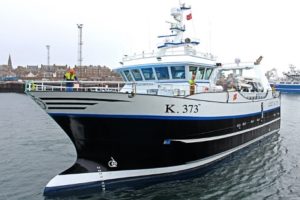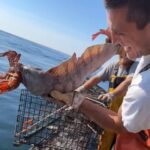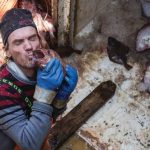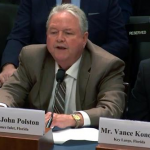Tag Archives: Pacific American Fisheries
Bellingham’s shoreline history: A boom, bust of resource extraction
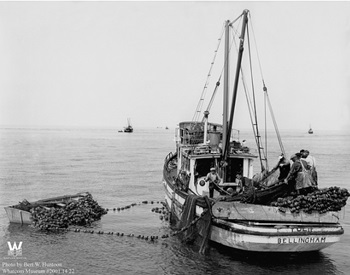 By 1890, the U.S. Census estimated approximately 18,500 people lived in Whatcom County. In the years that followed, additional lumber mills popped up. These included the Puget Sound Mill at the mouth of Padden Creek, the E.K. Wood Mill at Boulevard Park, and the Whatcom Falls Company (Loggie Mill) off Whatcom Creek. Pacific American Fisheries (PAF) first appeared in 1899 to process local salmon, eventually establishing the largest canning operation in the world. Both industries attracted large numbers of Asian immigrant workers, leading later to a significant shift in culture — along with significant racist worker backlash — in the region. The rich salmon runs also attracted canners and fishermen from Croatia, Finland and Ireland. Photos, >>click to read<< 09:20
By 1890, the U.S. Census estimated approximately 18,500 people lived in Whatcom County. In the years that followed, additional lumber mills popped up. These included the Puget Sound Mill at the mouth of Padden Creek, the E.K. Wood Mill at Boulevard Park, and the Whatcom Falls Company (Loggie Mill) off Whatcom Creek. Pacific American Fisheries (PAF) first appeared in 1899 to process local salmon, eventually establishing the largest canning operation in the world. Both industries attracted large numbers of Asian immigrant workers, leading later to a significant shift in culture — along with significant racist worker backlash — in the region. The rich salmon runs also attracted canners and fishermen from Croatia, Finland and Ireland. Photos, >>click to read<< 09:20
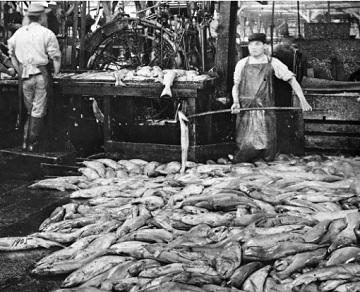
The Rise and Fall of Pacific American Fisheries: Fairhaven’s Historic Salmon Cannery
Before becoming part of Bellingham, Fairhaven grew up along railway lines. The town boomed with the region’s industries — fishing, lumber, and mining — into the 1870s, seeking the Northern Pacific Railway terminus. After the railway instead went to Tacoma, in 1873, multiple economic panics drove Fairhaven into a depression by the 1890s. However, Fairhaven soon found economic revitalization in what would become the largest salmon cannery in the world: Pacific American Fisheries. Whatcom County’s early settlers viewed the salmon crowding every stream as an almost inexhaustible resource. Fisheries would prepare salmon fresh, dried, salted, or smoked, but turned most into hog feed and fertilizer. Whatcom County had 11 large canneries by 1899, but many shuttered within years due to mismanagement. >click to read< 18:10

































